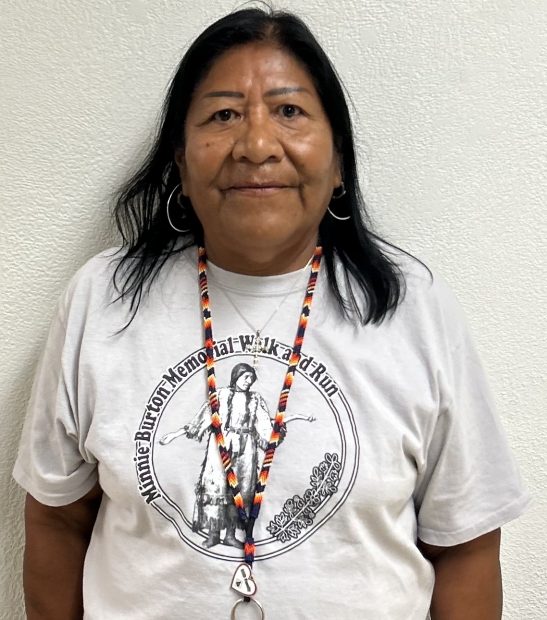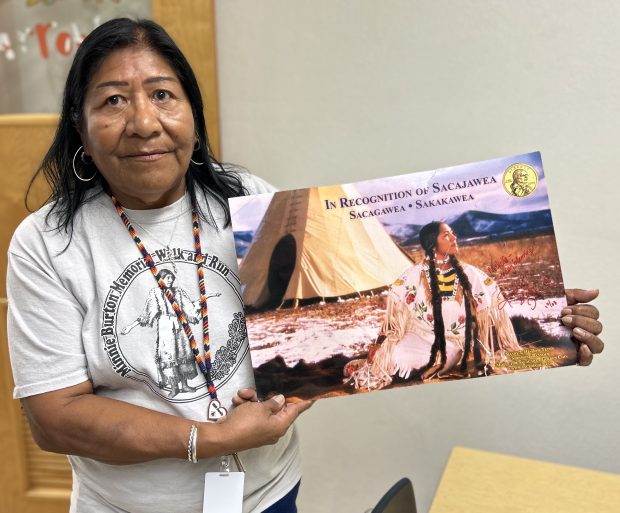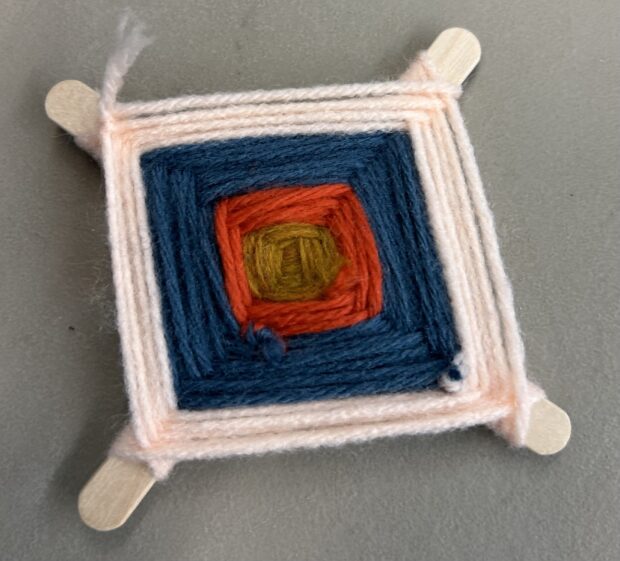BLACKFOOT — As a kindergartener, Michele Hernandez arrived at school speaking Shoshoni — the language spoken at home by her parents and grandparents, and the only one she knew.
But she would soon associate it with punishment; her Blackfoot School District teachers slapped her and washed her mouth out until she dropped her native tongue and started speaking English.

“That was the discipline back then,” she said. “You can’t speak your language and if you do, you get hit or you get punished.”
As an adult, Hernandez returned to the district where she was shamed for being different. And she came with a mission: to ensure that the next generations of Shoshone-Bannock students would feel welcome at school.
That calling became a career.
Next year, Hernandez will celebrate her 40th year as an Indian Education Paraeducator at Donald D. Stalker Elementary. Her impact on the school is visible: Every staff member wears a handmade beaded lanyard, Native American heritage is celebrated with a designated week and month, and all students learn about Shoshone-Bannock culture — from why boys have long hair, to the significance of traditions like powwows.
At a school located just miles from the Fort Hall Reservation, where the U.S. government forcibly moved the Shoshone-Bannock tribes, Hernandez is the only Shoshone-Bannock person on staff. To the dozens of Native American students who attend the school — and many others, as well — she’s become ‘grandma,’ or ‘huttsi’ in Shoshoni, an adult who makes them feel loved, seen and celebrated.
Hernandez has become the adult she needed as a kid, and wants students to know that what makes them different — like having long hair — is also what makes them special.
“For the boys, the hair is important because it shows who they are,” she said. “It’s where their power is.”
She’s taught generations of students about Shoshone-Bannock culture, including what she estimated to be about half of the tribes’ members.
“(Shoshone-Bannock) families feel comfortable knowing she’s here.” Anthony Peterson, the principal at D.D. Stalker, said. “She’s taught generations of kids and grandkids.”
Hernandez proudly recites former students’ achievements: Some have gone on to run tribal businesses and casinos, another was nominated for a Grammy, and yet another recently wrote a children’s book.

And she sees the promise in her current students, who she encourages to become leaders, in part by educating them about Shoshone-Bannock historical figures.
There’s Chief Pocatello, who was Hernandez’ great, great grandfather. And there’s Minnie Burton, Hernandez’ great-grandmother who led the Fort Shaw boarding school basketball team to a world championship at the 1904 World Fair.
“You can be leaders,” she told a classroom of fourth-graders recently. “If you have it in your heart, you can do it.”
Some students, like Tia Worley, are already leading the way. Worley is a Shoshone-Bannock tribal member and the student council president.
“She’s a really good girl and she’s pretty outspoken when she needs to be,” Hernandez said.
Worley said she couldn’t imagine being at a school that didn’t have cultural activities like the ones Hernandez provides — making crafts, hosting powwows, reading books about Native American characters.
“It would feel really weird because I’ve always had that at school,” Worley said. “There would be no point of being at school if they didn’t teach my culture.”
Hernandez knows what she means.
Kicked out of Blackfoot High, Hernandez returned to better the district — but there’s still work to do
Hernandez recalled one especially painful memory from her time as a student at Blackfoot High. She’d gotten in a fight, and the principal called her dad into his office. During that conversation, he referred to Hernandez as a “little lying Indian girl,” and he told Hernandez she wouldn’t amount to anything.
Hernandez was kicked out of school, and her dad sent her to a boarding school in Santa Fe. Eventually, she earned an associate’s degree in fine arts, and came back to work in the district where she was made to feel less than her peers.
And the person who signed her hiring paperwork was that same principal.
“I proved him wrong,” Hernandez said.
Now she’s an institution in the district, known for making everyone — not just Native students —feel welcome.
For example, Hernandez painstakingly crafts a beaded lanyard for every person on staff, including student teachers. Each takes her about six hours to complete, but she says it’s worth the effort and ensures that Shoshone-Bannock students see their culture supported and represented by every adult.
Gift-giving is an important part of Shoshone-Bannock culture, Hernandez said. It’s something she teaches students, who learn to make traditional Indigenous crafts like God’s Eyes and beadwork, then share them with others.

Every year, fourth-graders go to Grand Teton National Park and bring their handmade gifts for staff at the lodge where they stay and for park rangers. The park sits on traditional Shoshone-Bannock lands — a fact Peterson said Hernandez taught him.
“(Hernandez) helps us as non-Native educators to learn the culture and be sensitive to certain things,” he said. “It’s always helpful when you have somebody who can bridge those cultural differences.”
Hernandez also facilitates powwows every year, both in her district and in neighboring districts, to share Shoshone-Bannock culture and to let everyone know “we’re still here.” During what’s becoming an annual field trip to the reservation, she also teaches traditional games, like rock juggling and the shinny stick game.
From a kindergartener punished for speaking Shoshoni, to an educator sharing her language and culture with new generations, Hernandez is evidence of the progress that’s been made at the Blackfoot School District.
But there’s still work to do, she said.
“There’s still a negative perception toward different races that we need to work on,” she said. “It’s still prevalent in the district. As a community we need to learn from and respect each other.”

